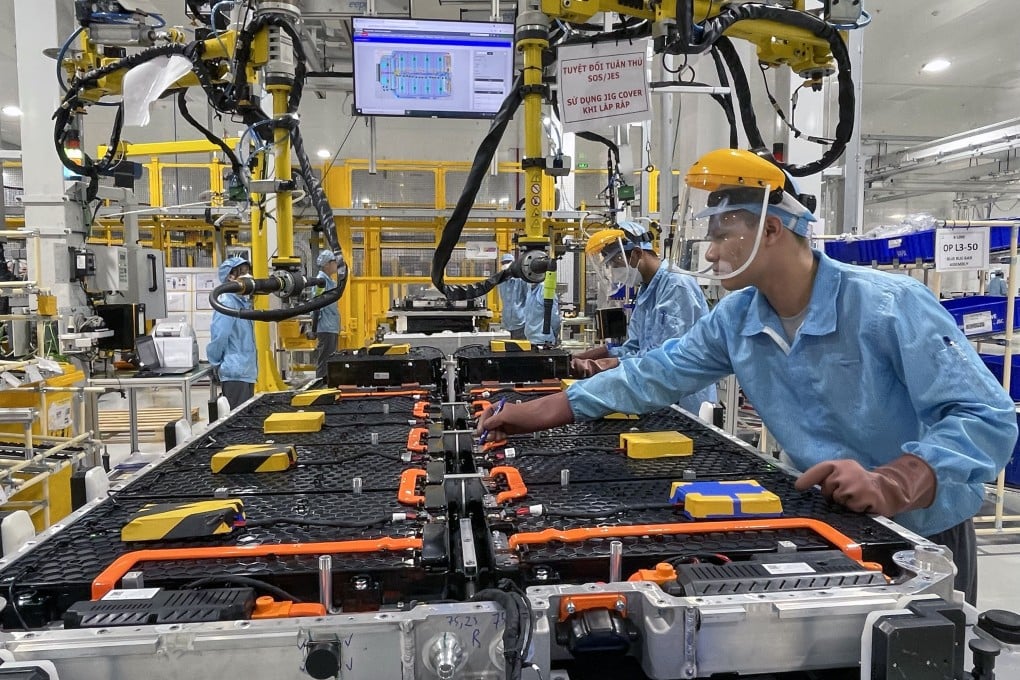Can Indonesia Become the Next Manufacturing Powerhouse in Asia?
Over the past decade, Southeast Asia has emerged as a vibrant alternative to traditional manufacturing hubs like China. Among its contenders, Indonesia—the world’s fourth-most populous country—has captured significant attention. With a vast labor pool, strategic geographic location, and a government increasingly focused on industrial transformation, Indonesia is positioning itself to become the next manufacturing powerhouse in Asia.
In this blog post, we’ll explore the current state of Indonesia’s manufacturing sector, government initiatives, investment incentives, and how foreign companies can tap into its growing potential.
1. The Current Landscape of Indonesia’s Manufacturing Industry
Manufacturing accounts for over 19% of Indonesia’s GDP, making it the largest contributor to the national economy (World Bank). Key industries include:
-
Textiles and garments
-
Electronics and appliances
-
Automotive and components
-
Palm oil and food processing
-
Chemical and pharmaceuticals
In 2023, Indonesia’s Manufacturing Purchasing Managers’ Index (PMI) remained consistently above 50, indicating continued expansion (Trading Economics). As supply chains diversify across Asia, more companies are looking to “China +1” strategies—placing Indonesia firmly on the radar.
2. Key Advantages: Why Indonesia Stands Out
🌍 Strategic Location
Indonesia sits along major international shipping lanes, offering easy access to China, Japan, Australia, and India. This makes it ideal for regional distribution and export logistics.
👷 Abundant and Affordable Labor
With a population of over 270 million and a median age of 30.2 years, Indonesia has one of the largest and youngest workforces in the world. Labor costs remain competitive compared to neighboring countries like Thailand and Malaysia.
⚡ Natural Resources and Raw Materials
Indonesia is rich in raw materials such as nickel, coal, rubber, and palm oil, providing a natural foundation for a strong manufacturing base. In fact, the country is currently one of the top global producers of nickel, a key component in electric vehicle (EV) batteries.
3. Government Initiatives to Boost Manufacturing
The Indonesian government is taking proactive steps to modernize its industrial base. Key policies include:
📘 Making Indonesia 4.0
Launched by the Ministry of Industry, this national roadmap aims to position Indonesia among the world’s top 10 economies by 2030 through smart manufacturing, focusing on sectors like:
-
Food and beverage
-
Automotive
-
Chemicals
-
Electronics
-
Textiles
Learn more from the official Ministry of Industry site.
🏭 Special Economic Zones (SEZs)
Indonesia has established over 15 SEZs offering:
-
Corporate tax holidays (up to 100% for 5–20 years)
-
Exemption of VAT and import duties
-
Simplified customs procedures
A good example is the Batang Integrated Industrial Estate, which has already attracted investment from global firms like LG and Foxconn.
Explore investment opportunities in Indonesia’s SEZs via Indonesia Investment Coordinating Board (BKPM).
4. Growing FDI in Manufacturing
In 2024, foreign direct investment (FDI) into Indonesia’s manufacturing sector grew by 12% year-over-year, with major contributions from South Korea, Japan, China, and the U.S. (ASEAN Briefing).
Notable developments include:
-
Tesla and LG investing in EV battery plants
-
Foxconn expanding electronics manufacturing operations
-
Hyundai building an integrated car manufacturing facility
5. Challenges on the Road to Powerhouse Status
While the outlook is promising, there are still hurdles Indonesia must overcome:
-
Infrastructure Gaps: Despite improvements, logistical bottlenecks in ports, roads, and rail remain in some regions.
-
Regulatory Complexity: Foreign investors still face bureaucratic red tape, although recent reforms have helped.
-
Skilled Labor Shortage: There’s a need to upskill the workforce to match Industry 4.0 demands.
6. The Role of Local Agents in Scaling Efficiently
Foreign businesses often face cultural and regulatory barriers when entering Indonesia. Working with experienced local sourcing agents and logistics partners—like those at Indonesia-Agent.com—can help:
-
Identify reliable factories and suppliers
-
Navigate licensing and compliance
-
Secure better MOQ (Minimum Order Quantities) and pricing
-
Arrange inland transportation and freight forwarding
Partnering with Indonesian agents can be the key to operational success, especially in sectors like electronics, garments, and FMCG.
7. Opportunities in Emerging Manufacturing Segments
In addition to traditional manufacturing sectors, Indonesia is expanding in:
-
Electric Vehicles (EVs): With rich nickel reserves, Indonesia is courting battery and EV manufacturers.
-
Medical Devices and Pharmaceuticals: Rising domestic demand and export potential.
-
Smart Textiles and Wearables: Merging traditional strengths with innovation.
Companies leveraging these trends early can build strong competitive advantages in both domestic and international markets.
Conclusion: Is Indonesia Asia’s Next Big Manufacturing Hub?
The signs are clear—Indonesia is on track to become a major player in Asian manufacturing. A growing population, policy support, rising foreign investment, and sectoral diversification all point to significant potential.
However, success requires strategic planning, local insight, and agility in navigating Indonesia’s unique business environment.
If you’re looking to source from Indonesia or set up manufacturing operations, visit Indonesia-Agent.com to connect with expert sourcing and logistics agents who understand the nuances of the Indonesian market.
